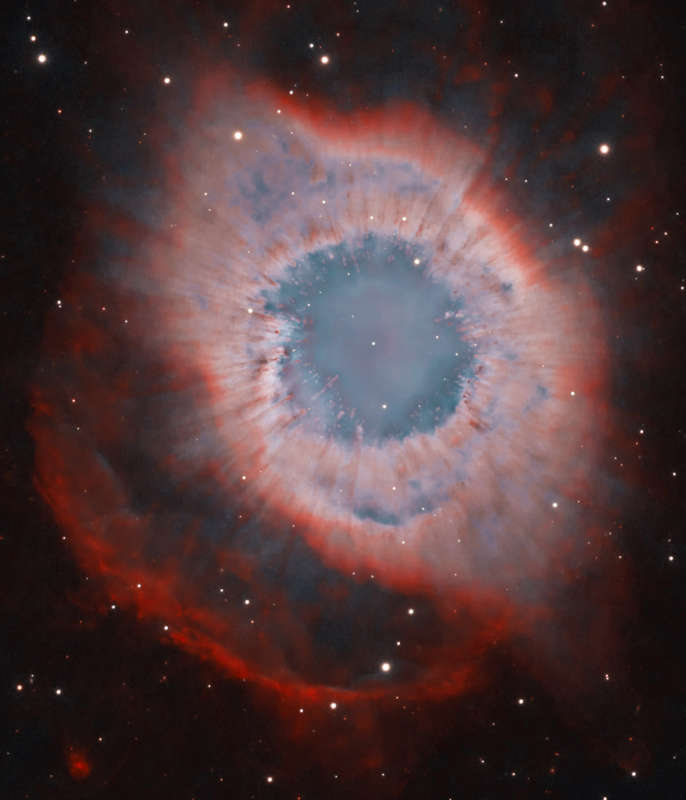
|
Credit & Copyright: Ignacio Diaz Bobillo
Explanation:
A mere seven hundred light years from Earth, toward the constellation
Aquarius,
a sun-like star is dying.
Its last few thousand years have produced the
Helix
Nebula (NGC 7293), a well studied and nearby example of a
Planetary
Nebula, typical of this final phase of stellar evolution.
A total of 90 hours of exposure time have gone in to creating
this
expansive view of the nebula.
Combining narrow band image data from emission lines of hydrogen atoms
in red and oxygen atoms in blue-green hues,
it shows remarkable details of the
Helix's brighter inner region about 3
light-years across.
The white dot at the Helix's center is this Planetary Nebula's hot,
central
star.
A simple looking nebula at first glance,
the Helix is now understood to have a surprisingly
complex
geometry.
|
January February March April May June July August September October November December |
| ||||||||||||||||||||||||||||||||||||||||||||||||
NASA Web Site Statements, Warnings, and Disclaimers
NASA Official: Jay Norris. Specific rights apply.
A service of: LHEA at NASA / GSFC
& Michigan Tech. U.
Based on Astronomy Picture
Of the Day
Publications with keywords: Helix Nebula - planetary nebula - NGC 7293
Publications with words: Helix Nebula - planetary nebula - NGC 7293
See also:
- APOD: 2025 August 31 Á NGC 7027: The Pillow Planetary Nebula
- APOD: 2025 August 22 Á A Tale of Two Nebulae
- APOD: 2025 August 5 Á NGC 6072: A Complex Planetary Nebula from Webb
- APOD: 2025 July 29 Á A Helix Nebula Deep Field
- APOD: 2025 July 13 Á Planetary Nebula Mz3: The Ant Nebula
- APOD: 2025 June 9 Á Between Scylla and Charybdis: A Double Cosmic Discovery
- APOD: 2025 May 14 Á NGC 1360: The Robins Egg Nebula
